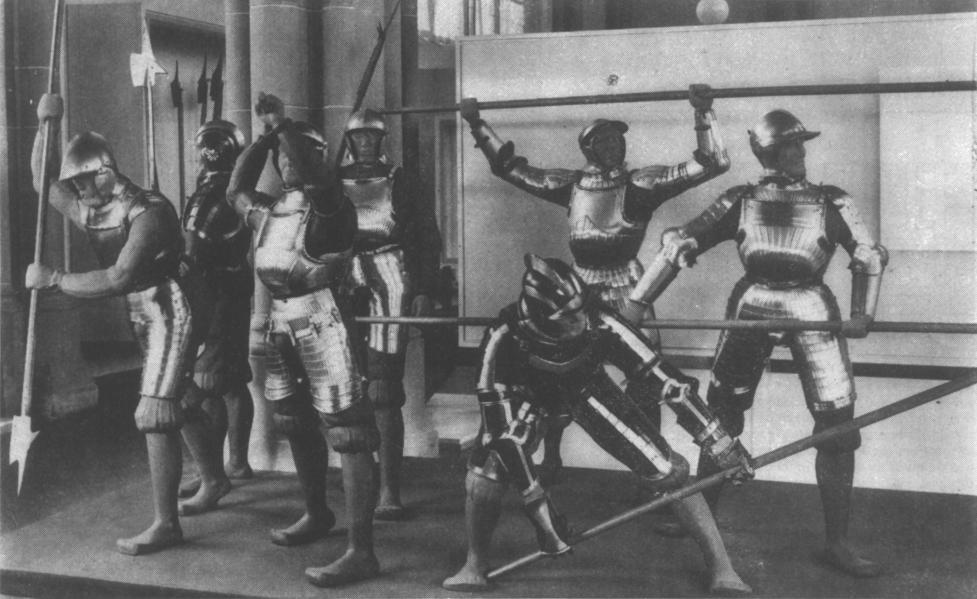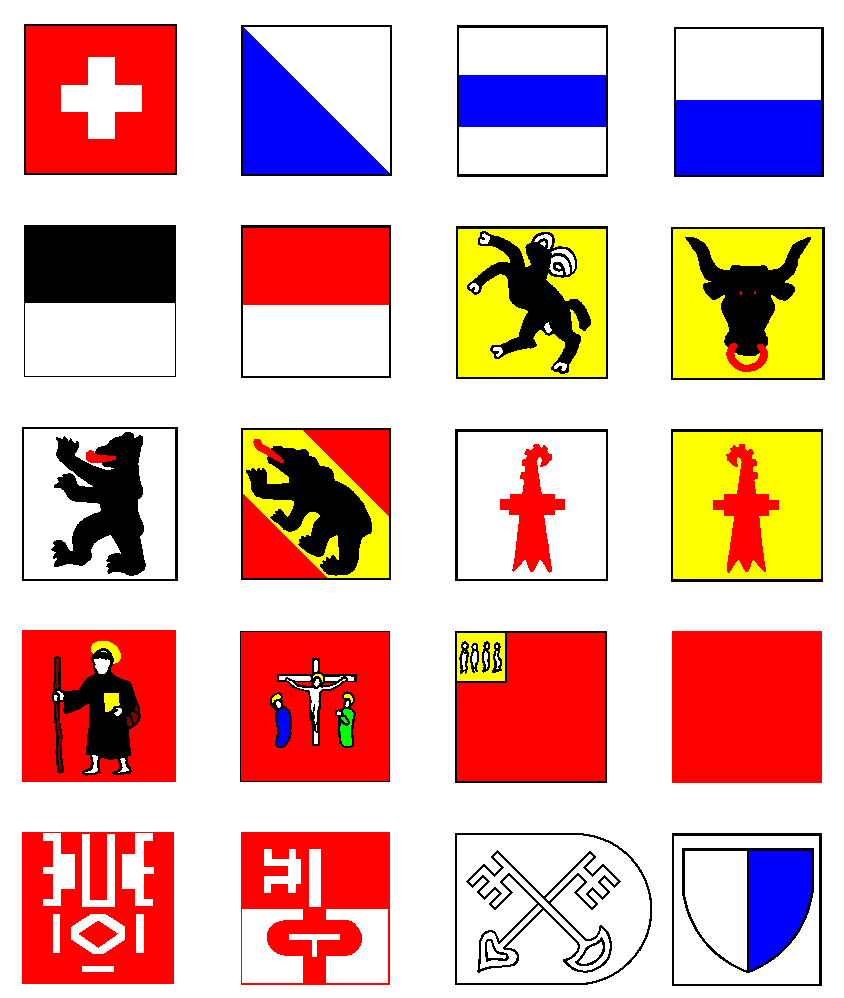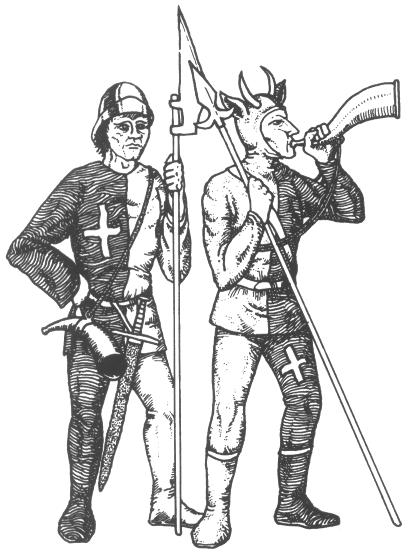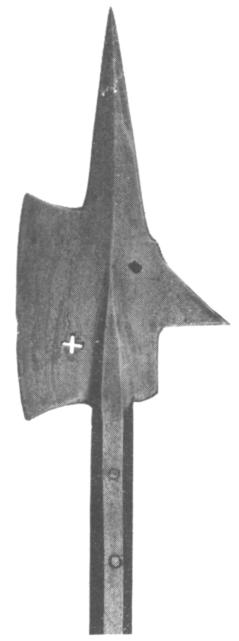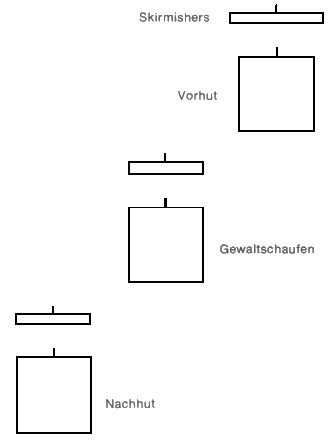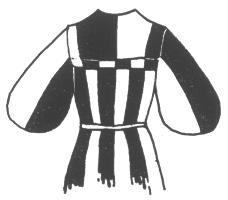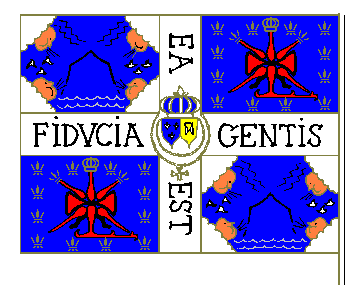
Cent-Suisse standard, early 17th Century. Blue flag, white cross, all detail gold except black writing; grey sea, natural faces. Centre shields are blue (left) and red (right), and large crown had blue backing. Ribbon in bottom left and top right is red (NB 'EST' is speculative).

